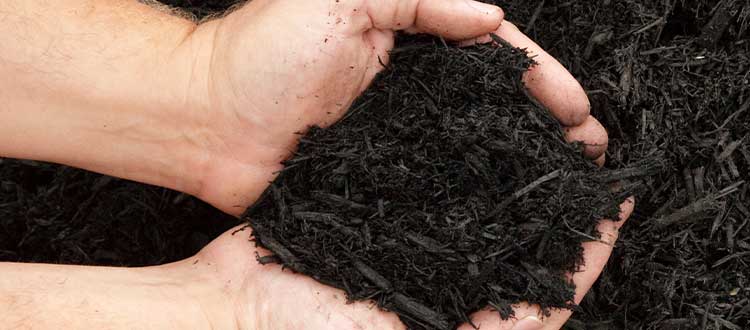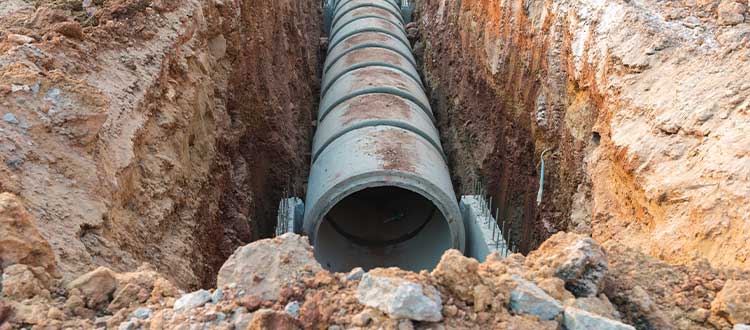General FAQs
What is a perk test?
Perk test is a slang term commonly used by the public to describe the process by which a piece of land is tested for drainfield use. "Perk" is short for percolation, which is what water does when it moves through the soil. Understanding water movement through soils is a critical component of a perk test. Certain individuals, Onsite Soil Evaluators and Professional Soil Scientists, are qualified to conduct perk tests properly, according to scientific method. Contrary to popular belief, a standard perk test does not involve filling a hole with water to see if the land "perks." A perk test, also known as a drainfield site evaluation, incorporates a thorough evaluation of soil properties and landscapes. Armed with a hand auger and a Munsell color book, the scientist will choose a suitable landscape and drill several representative soil borings to describe a drainfield site. Occasionally, a soil consultant will conduct a permeability test to determine the actual percolation rate of a soil layer. But, more often than not, the consultant will estimate the percolation rate at a chosen depth based on the soil's properties.
How long does it take to evaluate a piece of property for drainfield use?
It depends on the size of the parcel, the size of the project, the landowner's needs, and the complexity of the soil. On average, it takes about 2 hours to locate and document a drainfield for a single family home. Commercial projects and evaluations for failing drainfields typically take much longer (2 or more days). Complex soils require more extensive documentation, thus more time.
Who should evaluate my property for drainfield use?
Only highly qualified individuals who are certified, authorized or licensed by the Virginia Department of Health (VDH) or the Department of Professional and Occupational Regulations (DPOR). These individuals may be Environmental Health Specialists (EHS), Certified Professional Soil Scientists (CPSS) or Authorized Onsite Soil Evaluators (AOSE). However, not all public or private sector consultants are equal. Before you decide on a professional, check their credentials. Ask them how long they have been evaluating soils for drainfield use. Describe your project or challenge and ask them if they are qualified in that area of expertise. Many EHS are not CPSS or AOSE and do not have a background in soils or geology. Some CPSS have limited experience and knowledge of septic tank-drainfields, but are experts in other areas, such as nutrient management or wetland delineation. And some AOSE, even though they are certified, have a low comfort level with certain soils and system types. So, ask lots of questions before you choose a consultant to avoid problems down the road. Our recommendation is to choose a consultant who is a CPSS and an AOSE with at least 3-5 years experience evaluating soils in your region. They should be comfortable designing a variety of septic systems.
What is an Certified Professional Soil Scientist?
A Certified Professional Soil Scientist, or CPSS, is an individual who possesses a special knowledge of soil science and the methods and principals of soil evaluation gained from education and experience in the formation, description and mapping of soils. A CPSS is regulated by the Department of Professional and Occupational Regulations (DPOR) and certified by the Board of Professional Soil Scientists through education, experience and examination. A CPSS is held to a high standard of practice and conduct in their field. A CPSS evaluates, describes and maps soil types in order to predict their suitability for and in response to various land uses. Such land use evaluations may include septic tank-drainfields, residential and commercial development, sanitary landfills, forestry or agricultural production, soil erosion and sediment control, shrink-swell potential and hydric soils.
What is an Authorized Onsite Soil Evaluator?
An Authorized Onsite Soil Evaluator, or AOSE, is an individual who has demonstrated the knowledge, skills, and abilities in the practice of siting and designing onsite sewage disposal systems. AOSE's are licensed professionals who are governed by the Virginia Department of Professional Occupational Regulation (DPOR). VDH will accept evaluations and designs for onsite septic systems from an AOSE or Professional Engineer in consultation with an AOSE. Generally, VDH is required to take action on an AOSE submittal within a limited time frame or automatically approve the submittal. MSCI has experienced licensed AOSEs on staff.
What information is included in your AOSE package?
Our typical AOSE package for permitting includes a cover page, a soil observation summary, soil descriptions, design criteria, a detailed CAD site sketch and design drawing, construction notes and specifications, and operation and maintenance requirements. Some designs may also include pump calculations and station schematics, product sheets, permeability test data and health department documentation. AOSE packages for certification letters only include a soil report, abbreviated design and site sketch.
What is the difference between a Certification Letter and a Construction Permit?
A certification letter is a letter issued by the local health department, in lieu of a construction permit, that identifies a specific drainfield site and recognizes the appropriateness of the site for an onsite wastewater disposal system. Applicants who do not intend to build within 18 months should apply for a certification letter because the approval does not expire and conveys with the land. Certification letters can be converted to construction permits by submitting an application and paying any required fees. Certification letters are ideally for property transfers.
A construction permit is written approval from the local health department to install, expand, repair, or modify an onsite sewage disposal system. Permits are nontransferable and are issued for a specific owner, site, and design. Permits expire after 18 months.
What is the difference between a Conventional and Alternative System?
A conventional system is an individual sewage disposal system that consists of a septic tank or series of septic tanks and drainfield(s). This type of system may include a sewage pump.
An alternative system is more complex (and more costly) than a conventional system. An alternative system is required when the site and/or soil conditions are limiting. An alternative system typically includes treatment and dispersal methods, equipment, and technology specifically designed for the marginal site.
What is an Onsite Sewage Disposal System?
This is just a fancy industry term for a septic tank-drainfield system. "Onsite" denotes that treatment and disposal of the wastewater is occurring on the property that is producing the waste stream. This is in contrast to a centralized sewage treatment facility that accepts wastewater from a variety of sources. "Sewage" is the liquid or semi-solid substance produced by people living and/or working in dwellings, commercial facilities, etc. transported through various plumbing fixtures and networks to a final disposal site. An onsite sewage disposal system is designed to collect, treat and convey sewage to a point of ultimate disposal.
What is an Engineered Onsite Septic System and why do I need a professional engineer?
An engineered onsite septic system is a special system designed by a professional engineer to meet particular design parameters. An engineered system may consist of a combination of specific components designed to performance standards established by the designer and dictated by the site conditions and design parameters. A professional engineer may be required if the system is under pressure, is required to pump sewage long distances or uphill/downhill, if wastewater characterization is necessary or if a project dictates a design outside the site, soil and design requirements of the Sewage Handling and Disposal Regulations. The decision to use a professional engineer is typically made by the AOSE in accordance with Health Department guidelines.

